BMW M3 Vs M4 – What’s The Difference?
Are you struggling to decide which of these German heavyweights is best for your needs? We’ve put BMW’s M3 head-to-head against the M4 to settle the disputes.

Here, you can click on a particular section within this article, otherwise, scroll down as we put the M3 vs M4 head-to-head!
- M3 vs M4
- Driving Experience
- Features, Technology & Safety
- How to disable active sound BMW M3 & M4
- Which car is faster BMW M3 vs M4?
- How do the previous generations compare?
- The future of the M3 & M4
- Conclusion
Introduction
BMW’s slogan is “The Ultimate Driving Machine”, and their M-car range undoubtedly sits proudly at the forefront of that experience. With both the M3 and M4 leading the pack in the present day, is there a clear winner between the two?
With the M3 hogging the limelight in the family since the birth of the notorious E30 in 1986, the closest sibling it had was arguably the M5 or the short-lived Z4M. That was, until the launch of the 1M coupe in 2011.
The 1M mixed things up a little bit for BMW, as before this wild younger brother entered the market, aside from the M3, BMW had mainly focused on the M5 and M6, which certainly didn’t lack power or presence, but it could be argued that these missed the mark by being a more affordable, agile car for the masses.
After all, if you were in the market for a high-performance luxury car that makes for the perfect daily driver, shows off its reliability around the Nürburgring, and then drives you home in divine comfort, few cars rivaled the M3.
Although the 1M was comparable, if not superior in many ways, it would seem that BMW had never intended for it to be a long-term choice.
BMW confirmed this after selling less than 6,500 models during the 1M’s brief life span. After a one-year production period, it would be cast aside and left to become a rare legend for future history books.
Shortly after ceasing production of the 1M, it was time for the unveiling of a brand new alternative into the line-up – the M4. With this would also come two brand-new variants - the F82, and the F83.
If you’re not entirely sure of the model numbers, the F82 was the sleek and stylish coupe, and the F83 was the sexy cabriolet/convertible, for those that are partial to a little ‘wind in the hair’ feeling!
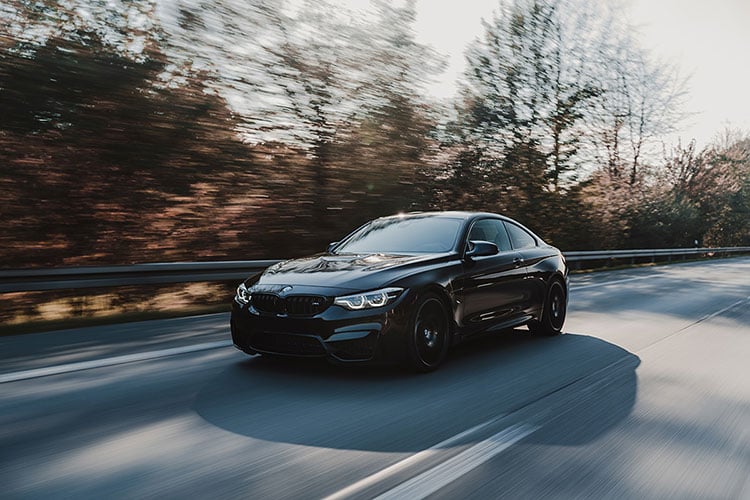
At the same time as the unveiling of the new M4, BMW also released brand-new F80 M3 to the market, with both models shown off at the 2014 North American International Auto Show. Talk about causing a stir!
Despite the previous-generation E92 M3 being available in sedan, coupe, or convertible body-types, the F80 was obtainable in just one variant - a chunky, aggressive-looking, four-door sedan, which certainly doesn’t lack in road presence.
Now, if you’re not already aware, then you’re probably wondering what the differences are between the M3 and the M4, which we’re going to take a more in-depth look at now.
M3 vs M4
As you’ve probably guessed, we can’t have an article about these cars without putting them head-to-head against each other. I mean, that’s what you’re here for, right?!
There’s no doubt that they look similar when placed side-by-side, with the noticeable exception of the number of doors, and the slightly more aggressive styling of the M3.
We’re not going to try and fool you; these cars are EXTREMELY similar. However, there are some subtle and also some more noticeable differences along the way.
Firstly, the M3 is undoubtedly more practical for most uses. With the extra doors, you’ll benefit from the odd-occasion where you’re keen to get the inconvenient passenger in the back seats.
The M3 features more aggressive styling, with bold, chunky fender flares, there’s no doubt that it’s one of the craziest looking sedans on the market!
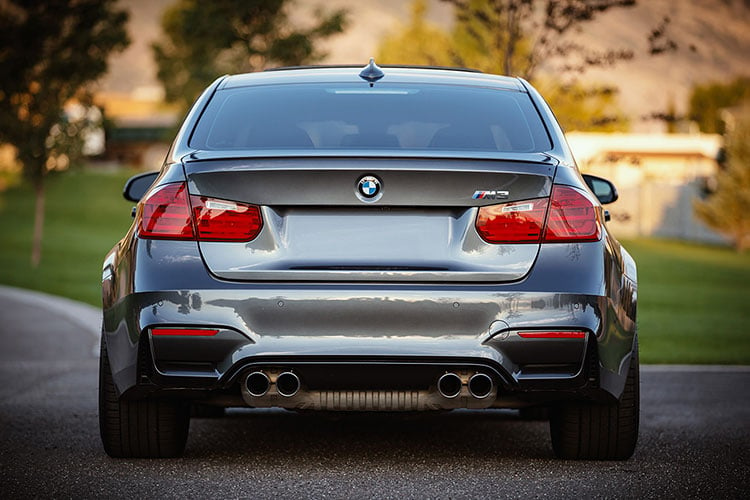
There were cost savings on the M3 when they were both purchased new, which is likely to reflect in the used car market further down the line, which could be the perfect opportunity to bag a bargain.
Those who are after a high-performance car are more likely to opt for the sportier M4 coupe, while those who are using their M for everyday life may well prefer the M3 sedan.
You’re also going to bag yourself some additional room with an M3, since it offers an extra inch and a half of headroom and legroom for those in the back, and they’re also spoiled with a more comfortable and spacious rear seat. There’s also an additional cubic foot of trunk space for those valuable moments.
There would be no shocking surprises under the hood unless you weren’t aware that BMW has done without the previous generation V8 in favor of the S55B30 engine in both cars. This time around, it’s the twin-turbo 3.0-liter inline-six that’s the weapon of choice, producing 425 hp and 406 lb/ft torque.
Although we can almost hear the collective groan of the V8 fanboys from here, you’ll perhaps be glad to hear that the change did provide substantially positive power gains, no less than 11 horsepower and 111 lb/ft torque.
Not only is there a healthy increase here, but the previous naturally-aspirated V8 engine didn’t peak horsepower until 8,300rpm, where the new inline-six reaches its maximum potential at just 5,500rpm through to the redline
Likewise, it’s capable of reaching the maximum 406 lb/ft of torque at only 1,850 right the way through to 5,500rpm!
Alongside this, M purists are likely to be disappointed that their raw naturally-aspirated classics of yesteryear have now transformed into twin-spoolers, which certainly doesn’t provide the same response or noise that the old-school generations once offered.
Before you get too upset, you’ll be relieved to hear that despite the turbos, BMW’s favorite, the inline-six, is still capable of being pushed to 7,600rpm, which is remarkable for an unmodified turbocharged engine.
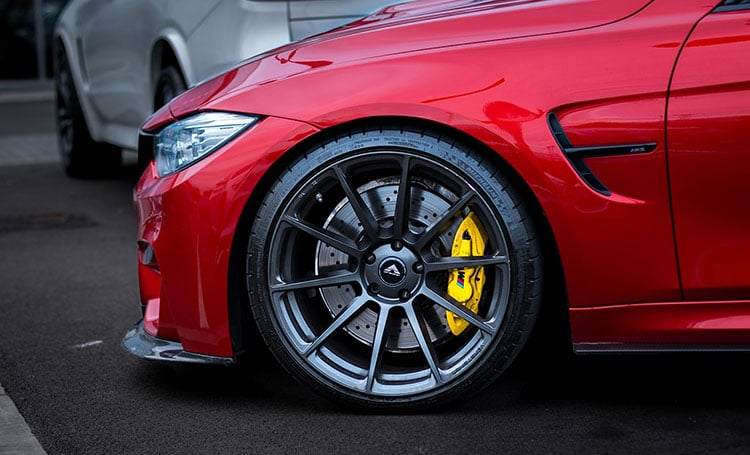
BMW has gone out of their way even further to try and keep the purists happy, too.
Unlike many of their modern-day rivals, both cars provide the choice between an old-school six-speed manual gearbox with rev-matched downshifts, alongside the 7-speed M-DCT twin-clutch automatic transmission.
Where the M-DCT launches the car from 0-62mph in 3.9 seconds with launch control, BMW state that it’ll take 4.1 seconds to do the same with the six-speed, although your local hero will undoubtedly argue otherwise!
When it comes to stopping, the optional carbon-ceramic brakes on both cars are incredibly refined, and if you’ve got the spare change, we’d highly recommend the upgrade.
With the extra doors of the M3 also comes a few extra kilos over the M4, 23 to be precise. Which isn’t bad considering it’ll make life far easier for shoving the kids or the mother-in-law in the back. Despite the extra doors, the M4 is a slightly longer car.
BMW did intentionally go out of their way to make this as light as possible, though, and it’s the first time in their history that they’ve built a new car which is lighter than its predecessor. You can expect a similarly-equipped E92 to weigh 176lbs more cumbersome than the younger brother.
The weight-loss partly comes down to the vast amount of aluminum used in the design, such as the hood and front fenders, alongside weight savings on other aspects such as cabin sound insulation materials, which can be surprisingly heavy!
The suspension has always been a hugely important factor for M cars, and these were, of course, no exception. Crafted from both aluminum and forged aluminum, this has helped keep the weight down while also improving rigidity.
Both cars rock the same forged wheel setup too, with 18″ x 9″ s upfront, and 18″ x 10″ in the rear unless you opt for the recommended carbon-ceramic brakes, in which case you’ll need to upgrade to 19’s.
It probably won’t come as much of a surprise that they share the same differential, too. This time it’s an electronically-controlled multi-plate diff, which works alongside the stability control system.
This means that it takes readings of various sensors, such as throttle position, wheel rotation speed, and yaw rate, which then adjusts the torque accordingly between 0-100 percent. Although this probably sounds boring to the purists and certainly doesn’t make for a terrifying setup, it does the intended job well.
When it comes to sound, you’ve probably guessed since everything besides weight so far has been identical, that there’s no difference in that department either! Now, this was never going to sound as impressive as the high-revving old school engines, but this is one aspect where both cars are slightly let down.
It feels as though the artificial engine sounds from manufacturers have almost become accepted into the motoring world now, but it’s still something that we’re struggling to deal with. In our minds, the adrenaline-fueled sound is one of the main factors that’s missing from both cars, which crafts a considerable part of an M-car’s personality.
Step back into an E30, an E36, or even an E46, and they’ll scream and purr their way throughout the gears. There’s absolutely no doubt that we miss that raw feeling that’s somewhat missing in modern cars.
Driving Experience
You’ve most probably noticed that size, doors, and weight aside, there isn’t much to compare between the two cars so far, but how do they fare when it comes to daily use, or hitting the canyons or the track?
Well, although it may come as a surprise, the truth is that there yet again isn’t an awful lot to tell between them!
The F80 had a lot to live up to, as the E9x M3’s were still immensely-loved drivers cars. The 4.0-liter V8 may not have been the purists’ dream, but it naturally found its home under the hood and continued to deliver the raw sound that we’ve been craving from the recent models.
It has to be said, though, that despite the lacking awesome noises, the 406 lb/ft torque entering at 1,850rpm makes both of these modern cars a joy to drive as a road-going daily, which is something that the E9x series certainly didn’t have due to its lack of torque.
The new six-speed manual box is the absolute best that BMW has ever produced, and they’ve used an uprated version of the previous 1M coupe box, but this time they’ve perfected and lightened it especially for these models.
If you’re lucky enough to have the opportunity to get your hands on a manual, you’ll undoubtedly know what we mean. However, with less than twenty percent of all sales in manual, it may be a struggle to get your hands on one unless there’s one at your local showroom or on the used market.
Although the manual box is incredibly impressive, the rev-match feature certainly takes some adapting. One of the bonuses of getting a manual is being able to do the work yourself, and although some people may well prefer the automated feature, it’ll yet again trigger the purists!
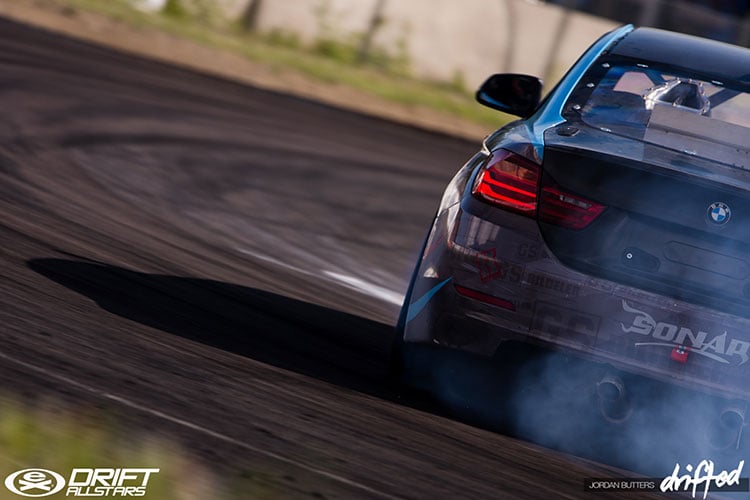
If you wish to control this yourself, you’ll need to activate the Sport Plus throttle mode, which is fine unless you’ve become adapted to doing this daily in typical driving scenarios. It would’ve been nice to have this option in the standard driving mode.
With that said, we love the sheer amount of adjustability provided, which allows you to completely customize your experience, matching the “Ultimate Driving Machine” ethos.
If you want to push the car’s power potential, but still have comfort for the rough roads on the canyon run, then you can change the power to how you want it but leave the suspension comfortably soft to absorb the bumps (and crashes) of the open road.
When it comes to pushing the car, it does feel more modern and automated than the E9x, as you may suspect. It’s safe to say that the E9x was the last true ‘analog’-feeling car, and the sheer quantity of high-tech gadgets and assists at your disposal has become more apparent than ever.
With the electronically assisted steering, it feels lighter and almost as though the computer is often doing the work for you. It’s certainly a long distance away from the original E30!
If you’re keen to stick with the old-school feel, it may well also be worth looking at some of the previous generations to see if any of those tick the right boxes for your needs.
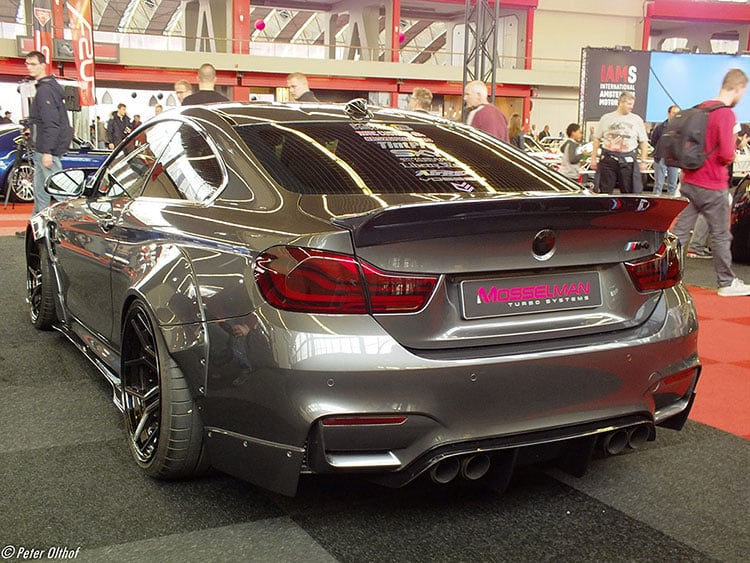
There’s no question that this generation is king when it comes to usable power, though. Whether it’s on the road or at the track, the twin-turbo setup comes to life and provides endless amounts of power and torque throughout the entire rev-range.
Whatever your thoughts, this generation is the fastest on paper, but it’s also clearly displayed when you’re behind the wheel, too!
When it comes to driving experience, it’ll be down to you to your personal preference to decide whether you want the fast-paced modern thrill, or the raw driving feel of the previous generations.
Features, Technology & Safety
After covering the driving features above, we thought we’d take a glance at the extra gadgets which you’ll get with your purchase, and these cars certainly aren’t short of them!
Despite so many changes from the E9x, the interior changes have to be up there with some of the most substantial. If you were to go from either of these and then back to an E9x, it’s likely to feel like you’ve stepped back in time!
With features such as side and top view camera systems, lane warning, and even additional features such as frontal collision and crash prevention, this is all displayed on a glorious 8.8-inch screen.
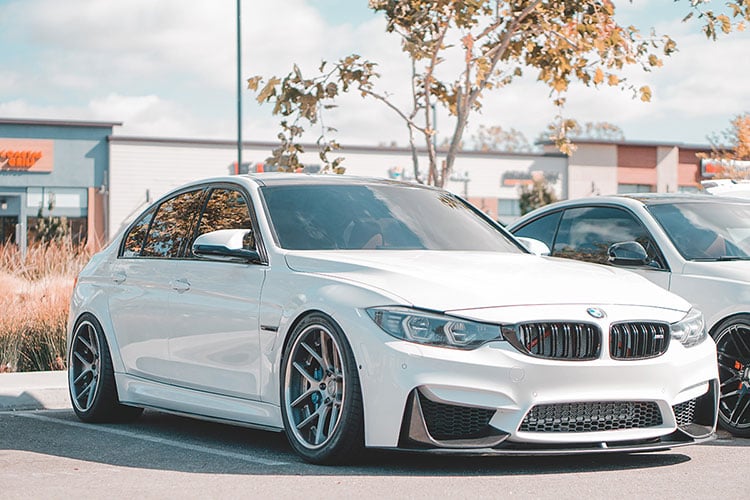
Not only that, the list goes on and on to include more such automated parallel parking, automatic high beam lights, and even a heated steering wheel. I suspect the purists might struggle to find these features in their E30’s!
These additional features certainly add to the whole experience, combining some of the most impressive modern-day technology with perfected comfort, which makes it a joy to be in every day, even on the tedious long journeys.
How to disable active sound BMW M3 & M4
For those of you that are struggling to adapt to the active sounds which play through the speakers and emulates the engine sounds, you’ll be glad to hear that there is a way to disable it.
Although it’s a simple process, this video guide will show you the procedure step-by-step. If you’re not confident with working on cars, then we recommend outsourcing the job to a professional.
Which car is faster? BMW M3 vs M4
Given that both cars utilize an identical engine and drivetrain in the current generation, depending on the transmission you choose, the M4 would be the faster car due to its weight loss over the M3.
With that said, the weight difference is minimal, and we certainly wouldn’t be making this a make-or-break decision when buying either car.
Check out this video of the two 2021 models going head-to-head to see how close it is on the drag strip:
How do the previous generations compare?
BMW E30 M3 - 192hp-235hp
With the U.S. being handed just 192hp in their E30 M3, the AK07 European-spec offering was far more impressive, delivering 235hp in stock form.
BMW E36 M3 - 240hp-316hp
Unfortunately, things didn’t improve very much for the U.S. market in the second generation, with just 240hp on offer. Meanwhile, in Europe, the earlier models were handed 286hp before going on to achieve 321hp for the later 3.2L version.
BMW E46 M3 - 333hp-338hp, BMW E46 M3 CSL - 360hp
Thankfully, BMW finally stepped up their game for the launch of the E46 M3 and released the same impressive S54 engine for both the U.S. and Europe, with only minor differences between the two.
BMW E9x M3 - 414hp, BMW E92 M3 GTS - 444hp
The impressive shared power continued, and as always, the power figures and lap times continued to improve for the E92 M3, which featured the S65 V8 for the first time.
BMW F80 M3- 425hp, BMW F80 M3 CS - 454hp
BMW F82/F83 M4 - 425hp, M4 Competition - 444hp, M4 CS - 453hp, M4 GTS - 493hp
As you can see, the power figures have continuously climbed throughout the generations, and with the M4 GTS almost tipping the 500hp mark, could we finally see a 500hp M3/M4 road legal variant in the near future?!
Take a trip down memory lane as Internitus take a look at all of the previous M models in this fantastic video.
The future of the M3 & M4
With BMW having now released the seventh-generation 3-series (G20) and the new 4-series on its way, we’re getting closer than ever to seeing the next generations of the M3 and M4!
BMW is likely to announce the next versions (G80 and G82) at some point in 2020, with an anticipated 2021 release date. Spy shots have already begun trickling in through the press as they start pushing the fresh new builds to their limits.
Those of you concerned it may have been the last chance for the manual in the current generation would be wrong, as BMW has already confirmed it’s here to stay, for now at least! Delays between gear shifts during testing have also confirmed this.
There will undoubtedly be mixed opinions on the engine of choice once again, as it’s quite a controversial one!
It’ll most likely once again be an inline-six twin-turbo, but this time with the S58 from the X3 and X4M, which is based on the new M340i and the fifth-generation *ahem* Toyota Supra.
There’s likely to be Competition variants of both cars upon release, with the standard versions expecting to achieve around 473 hp / 442 lb/ft torque and the Competition models with around 500 horsepower.
There are also rumors of CS, CSL, and four-wheel drive variants, and they’re most likely going to feature kidney grilles that only a mother could love!
Exciting times lie ahead for BMW, and we can’t wait to see how they perform. They certainly have big shoes to fill!
Conclusion
We’ve certainly done a lot of comparison guides here at Drifted, but the sheer amount of similarities between the M3 and the M4 have shown how little these two modern-day masterpieces vary. For some, it may be as simple as whether they’re looking for two, or four doors.
Although there were rumors that an M4 Gran Coupé was on the horizon, which would’ve made this an even tougher choice, BMW has apparently ruled out the possibility of this happening in the near future.
Both are terrific cars in their own right. Although they may not be everyone’s idea of perfection due to the modern nature of the current generation, there’s no doubt that their everyday potential combined with sheer power, reliability, and convenience makes it easy to see where the temptation lies.
If you’re after a more raw ‘old school’ feel, rather than making the most of the modern technology on offer, then we’d highly recommend also looking at the previous M3 generations, as they’re all gloriously unique in their own right.
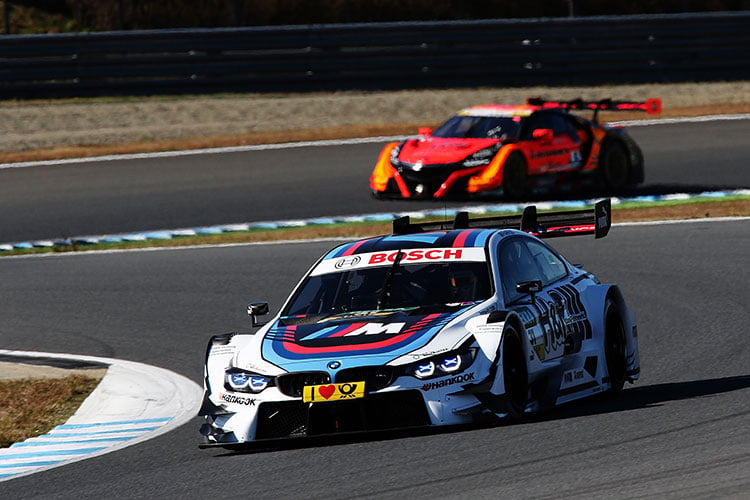
When it boils down to the ultimate question of this guide, M3 vs. M4, it comes down to what your needs are from your car on an everyday basis, but also which one will make you turn around most when you walk away.
Some enthusiasts will argue that a high-performance sports car should never be a sedan with four-doors, while others will prefer the aggressive flares of the M3 while they open the back door to conveniently let their friends in the back, before giving them the thrill of their life!
The changes in weight are so slight between the two, with the M4 ever so slightly lighter, that we don’t think it should come into consideration.
Both the engine and drivetrain are identical in both cars, and the power delivery is incredibly impressive.
There are very few rivals on the market for either car when it comes to having something which will put up a good fight against most vehicles on both the road and the track, while also providing the comfort and reliability that these have to offer.
So, take a long, hard look at both cars, go with the one that makes you fall in love, and enjoy the experience of owning one of the most impressive all-around rides that money can buy!
Thank you for reading our M3 vs M4 guide!
If you enjoyed this article, then please share it with the sharing buttons at the side and the bottom of your screen.
Want to know why BMW-enthusiasts claim that the N54 engine is the ‘German 2JZ’? Find out here.
Photography credits
We thank the following entities for use of their photography in this article:
- Benjamin Child on Unsplash
- Rodan Can on Unsplash
- Carter Brink on Unsplash
- Takayuki Suzuki on Flickr
- peterolthof on Flickr
- Toby_Parsons on Pixabay


 (7 votes, average: 4.14 out of 5)
(7 votes, average: 4.14 out of 5)














